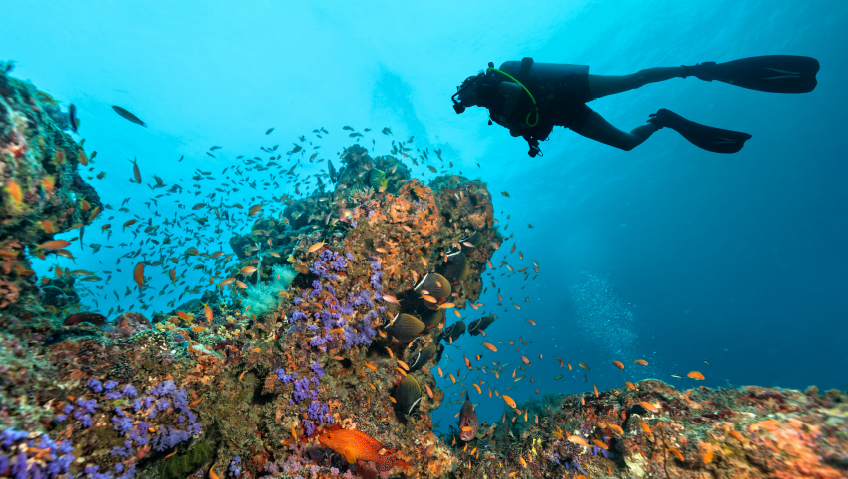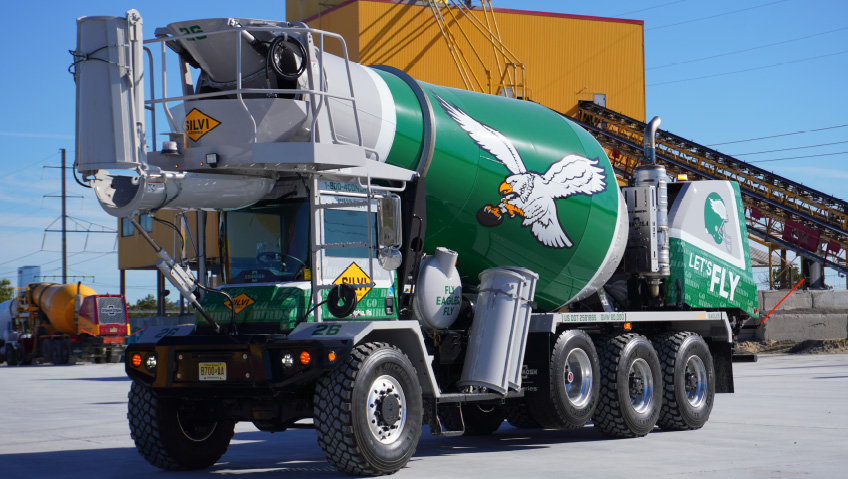Learning can take place anywhere, and The Water School at Florida Gulf Coast University (FGCU) is testing this theory with a unique approach that takes students, researchers and enthusiasts alike below the surface in the waters of the Gulf of Mexico. Here, they will get as close as they can to the wildlife, environment, and ecosystems they intend to research.
FGCU, with the help of donors, established an artificial reef called Kimberly’s Reef, a collaborative, living underwater laboratory that will serve as a classroom for all ages, to promote interdisciplinary research on water quality, sustainability, and human health while advancing environmental stewardship and championing the importance of coastal waters and ecosystems.
Kimberly’s Reef will unite the arts, education, environmental science, and engineering while serving as a training ground for divers seeking certification and recreational divers alike.
Off to a rough start
Kimberly’s Reef was made possible by generous donations from Eric Rieseberg, Helen Noble Rieseberg, and others. It is named in honour of Eric’s daughter, Kimberly Anne Rieseberg, who died of cancer on her fourth birthday. Eric is Chair of the Vester Field Station Community Advisory Board, which plays a role in the reef’s operations.
Leading the project is Professor of Marine Science and Director of the Vester Marine and Environmental Science Research Field Station, Dr. Michael Parsons, who had a front row seat to the many coordinated efforts it took to make the reef a reality.
Like any major projects slated to advance, the optimism and excitement were palpable from the outset. The project was expected to go ahead at the beginning of 2022, but unfortunately, project delays and the impacts of Hurricane Ian would stand in the way of that timeline.
Due to the damage incurred by the storm, all available resources were dispatched to aid recovery efforts, including efforts to mitigate the physical damage at the project site, which meant Kimberly’s Reef would have to wait. The issue with waiting, however, was the permit for the location and the project granted by the U.S. Army Corps of Engineers was set to expire in the Fall of 2023.
Luckily, by early March 2023, the 11-acre reef complex began to take shape. Kelly Brothers Inc. of Fort Myers, Florida was contracted for the deployment activities, selected for the equipment and the capacity they brought to the project, which included skilled divers to precisely position the materials, a critical component of the project’s success.
Located 10 miles offshore of Bonita Springs, the site was selected for its sandy, relatively lifeless composition, but there were still complexities to overcome. The project required the lowering of 18 concrete box culverts with dimensions of 10 feet by five feet by seven feet, weighing more than 20,000 pounds each, in precise locations at 30-foot depths via barge.
The culverts, which were donated by Old Castle Cement Industries in Cape Coral, were deployed in six units of three, 150 feet apart to create underwater “villages” where marine life could thrive and where new ecosystems could be established and monitored, with one acting as a control group.
A sea of opportunity
The design of Kimberly’s Reef enables fish to spread out across the different villages to promote biodiversity, and the culverts were decorated with three-dimensional coral-like pieces to make it more lifelike. The habitat is ideal for many fish species as well as coral, sponges, and other native marine life, while also supporting marine and land-based biotech and scientific industries, recreation, hospitality, and tourism, the latter of which is a major economic driver in Southwest Florida.
To be able to maximize the research and learning that takes place at Kimberly’s Reef, as well as the economic and social benefits that it will bring to the region, the project is equipped with oceanographic and instrumentation sensors to collect and transmit information and data back to researchers at Vester Field Station. The sensors are integrated into FGCU’s buoy system to monitor meteorological and oceanographic conditions, producing data to support the various streams of research taking place.
The project will go beyond supporting healthy ecosystems and water quality to include protections for public health and safety and the promotion of safe and efficient marine operations, including support for the National Weather Service Network’s marine and weather forecasting.
By monitoring the physical processes of waves and tidal currents and their directional movements, researchers can see how this structure affects the flow of the water and any environmental changes this may produce, as well as the implications this will have for the living organisms below the water’s surface.
Further, collecting data from severe weather events like hurricanes can inform decision-makers on how to mitigate their impacts in the future in the collective interest of human safety and the environment. This also holds true for manmade disasters, like the oil spill at Deepwater Horizon that occurred in 2010, or other mass polluting events.
Where knowledge blooms
Without a doubt, Kimberly’s Reef is a unique underwater world of opportunity that takes researchers and underwater enthusiasts below the surface to develop a deeper understanding of the relationship between the artificial reef and the environment, and how they collectively impact life on the coast for all species.
Perhaps one of the most important phenomena that can be studied and better understood is the impact of algae blooms—particularly red tide, Karenia brevis—which have wreaked havoc on the Florida coast throughout the years. The sensors at Kimberly’s Reef are designed to monitor dissolved oxygen, salinity, and chlorophyll levels, indicators of algae blooms. Previously, chlorophyll levels were measured by the National Oceanic and Atmospheric Administration satellites, which are only able to detect the top of the water column, and red tide isn’t always detectable at the surface.
Red tide results in mass die-offs for many species that are critical to achieving ecosystem balance in the Gulf and causes health issues for humans when it reaches the surface and begins to decay. Once airborne, its toxins can cause respiratory issues and illness, a threat that, with more research, can be mitigated.
Hope for the future
By working to solve these issues, Kimberly’s Reef is fulfilling its intentions. The Riesebergs’ donation was intended to honor Kimberly by symbolizing the hope, the joy, and the dreams that inspire a bright future, enabling her spirit to live on through this gift for a better tomorrow. And the project will continue to do just that and so much more.
Kimberly’s Reef’s unique approach to teaching, learning, and construction has reimagined what the classroom looks like and how it functions to create new ecosystems where life, both wild and human, can thrive.






